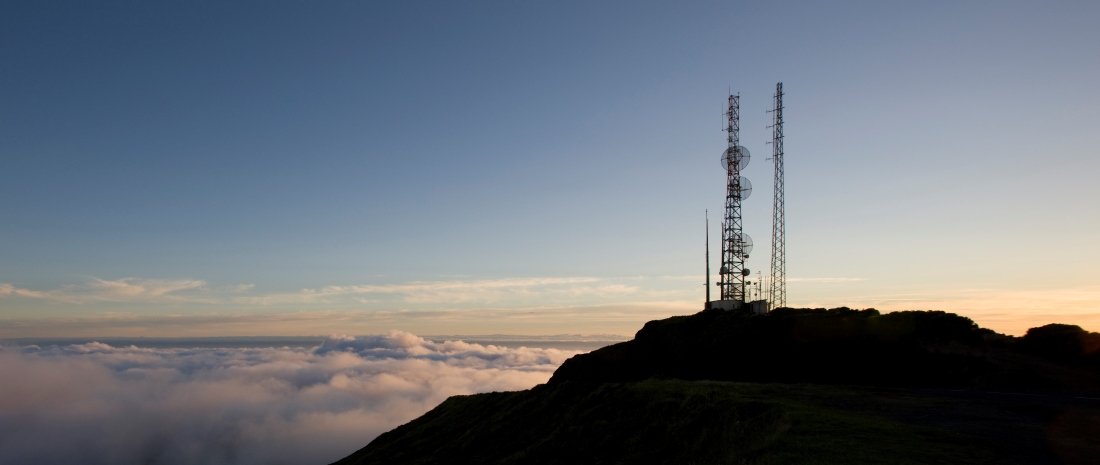
Electromagnetic interference (EMI) issues on broadcast tower lighting systems are hard to pinpoint and diagnose. It’s best to avoid interference issues by following good practices at the time of installation. These include equipment location, shielding, grounding and filtering.
Equipment Location
- Avoid placing tower lighting equipment (especially split systems) in the RF field.
Shielding and Grounding
The goal of shielding and grounding is to block EMI by surrounding all conductors and electronics of the lighting system with a continuous metal shield. Ground the shield to the tower structure. It must not have gaps since RF energy can pass through very tiny openings in metal enclosures or conduit.
- Mount all enclosures, junction boxes and conduit on the tower structure with a clean, tight, metal-to-metal mounting (not through paint or rust).
- Verify that all enclosure and junction box doors and covers fit tightly and latch securely.
- Plug all unused enclosure holes with metal fittings or plugs.
- Run all cables and conductors within metal conduit or metallic flex, especially
- All power and communication wiring (3360 cable or individual conductors and shielded communication cable) between controller and beacons,
- On tier five and above, the wiring between the PC302 and the FH308, as well as wiring between the PC204 and FH204. If the AOL cable is not run in metallic seal-tight, ensure that the conduit running within the AOL antenna is rigid steel.
- Ensure that all the conduit and flex are in good condition. The metal should completely surround all conductors including at junction of conduit/flex fittings and enclosure.
- Ensure that all conduit and flex fittings are correct type and size. Ensure they are properly installed so that they make a tight metal to metal connection at each enclosure entry.
- Inside enclosures, install grounding bushings on all conduit entries.
- Take care with shielded cables (communication, flashhead, etc.) to ensure that the shield is continuous and undamaged.
- Connect the drain wires of the shielded cable on both ends of the cable. In the power converter and flashhead, connect to the grounding bushing at its conduit entry, making the drain wires as short as practical.
- Ground both ends of any unused conductor of the 3360 cable within the power converter and junction box. This includes the yellow, violet, and unused phase wire.
WARNING: These must be disconnected in both the power converter and the junction box. Make them as short as possible and ground to the enclosure. Failure to do so in BOTH enclosures could result in a dangerous electrical surge. - Ground the conduit at the base of the tower directly to the ground ring using #2 solid.
- If RF issues persist, install a flat bonding/grounding strap or braid (not wire) from each equipment enclosure to the tower.
- If RF issues persist after other work is completed, install copper tape at least 1” wide over the gap on enclosure or junction box between door and box. Install tape around entire perimeter of the box. Check that the tape makes a tight metal to metal fit with no gaps.
Filtering
- Install EMI ferrites inside each power converter on each communication conductor pair (white, black) and incoming power conductor pair. Place ferrites as close as possible to where the conductors enter the enclosure. Multiple conductor passes through the ferrite core is best. Split core ferrites are acceptable.
- Keep communication and power wiring as far apart as possible within the enclosures.
Other
- Adjust enclosures to direct door openings away from the RF path or relocate them.
- To ensure no erroneous alarms are encountered, strip all wires properly to allow solid metal-to-metal contact with termination points. Make sure all screw electrical connections are hand tight and that plug on connectors and terminals are snug and secure on PCB’s, capacitors, power transformers, relays, etc.
- In junction boxes, point all wire splices up to reduce the potential for connection degradation due to moisture.
- Ensure all electrical wiring connections meet factory guidelines, NEC codes and local and state requirements.
